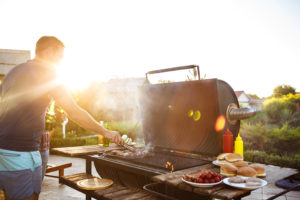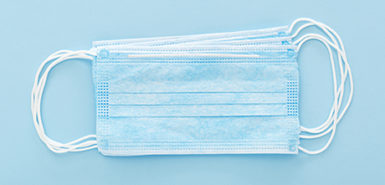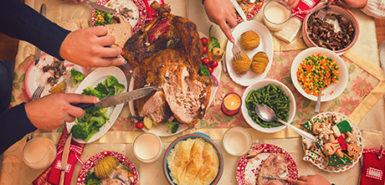
Hand-washing, wearing a mask and staying about half a dozen feet from others are still the best steps we can take to reduce exposure to the virus that causes COVID-19.
With the number of new cases trending upward in the U.S. in recent weeks, what’s the best course of action for family picnics, parties or get-togethers?
The short answer: For most, it’s relatively safe to gather in small groups of 15 or fewer, as long as precautionary measures are in place.
COVID-19 or not, it’s unreasonable to expect everyone to avoid social interactions with loved ones and friends, said Liam Sullivan, DO, an infectious disease specialist with Spectrum Health.
“We’re human beings,” Dr. Sullivan said. “Human beings are social creatures by nature. We crave that interaction with people.
“We can’t live this cloistered existence—it’s just not good for our mental health,” he said. “We have to socialize. But we have to find a way to do it safely. And there are ways to do it safely to minimize the spread of the virus.”
Avoid large gatherings and stay away from uncontrolled indoor environments such as bars, Dr. Sullivan said.
The primary precautions you can take:
- Wear a mask whenever possible.
- Maintain a distance of 6 feet or more from others.
- Wash your hands frequently.
- Try to keep it outdoors in well-ventilated areas
Beyond that, check with the organizers of your get-together to verify they’re taking proper steps to reduce the spread of germs.
One order of business: Food and drink setups should cut down on transmission of germs.
“You have to reduce touch points,” Dr. Sullivan said. “Having common touch points is not a good thing.”
Got pasta or salad that needs doled out? Don’t stuff a spoon in the container and expect folks to scoop a heap onto their own plate.
“The better thing to do: Have one person serve,” Dr. Sullivan said. “Have one person be the touchpoint person.”
Designating a single server cuts down on transmission of viruses—not just for coronavirus, but foodborne illnesses such as norovirus, too.
“Also—have hand sanitizer available for people,” Dr. Sullivan said.
Risk vs. benefit
Folks in at-risk groups should carefully weigh the risk-benefit ratio before attending any gathering, Dr. Sullivan said.
“What they need to look at when going to an event is, No. 1, who’s going to be there?” he said. “Are they going to an event where it’s friends and family they know? Where it’s people who have been really safe and have been careful through this whole thing?”
It’s probably OK to attend.
“But regardless, you still have to consider how many people are there, too,” he said. “The more people there are, the harder it is to know what everyone has been doing.”
Keep the group small, he emphasized.
“And keep it amongst people they feel comfortable with and trust, who have been practicing good safety measures,” he said. “I think it would be very unwise for people who are vulnerable—by age group or underlying medical conditions—to go to big events.”
Restaurants may be OK depending on the level of precautions taken, but try to get an outdoor seat if you can.
Dr. Sullivan recommends steering altogether clear of local watering holes.
“Just stay out of bars right now, frankly,” he said. “Unless you can sit out on a deck or a patio and have good air circulation.”
Bar environments are too raucous and uncontrollable.
“You get in a bar where there’s, one, poor air circulation, and two, it’s crowded—even if it’s at reduced capacity,” Dr. Sullivan said. “And you know how people act when they get in a bar and start drinking alcohol.”
Voices go up. Respiratory droplets fly. Hand hygiene goes out the window.
“You have a perfect storm in a bar,” Dr. Sullivan said. “One person gets it, then two, then four, then eight.”
Ultimately, everyone—but particularly those who are vulnerable—should carefully choose where to go and who they’re around.
“The idea is to keep people distanced apart from one another so the risk of transmitting the virus is low,” he said.
The virus that causes COVID-19 is unique not just because humans lack immunity, but also because it can spread when carriers show no symptoms, Dr. Sullivan said.
“It’s different than other respiratory viruses, like influenza, and respiratory syncytial virus, or rhinovirus, which causes the common cold, or even other coronaviruses that circulate year-round and cause common colds,” he said.
“People are spreading it when they’re not getting symptoms at all,” he said. “It’s sort of a unique virus in that aspect.
“And that’s what makes it so tricky and difficult to control.”

 /a>
/a>
 /a>
/a>
 /a>
/a>